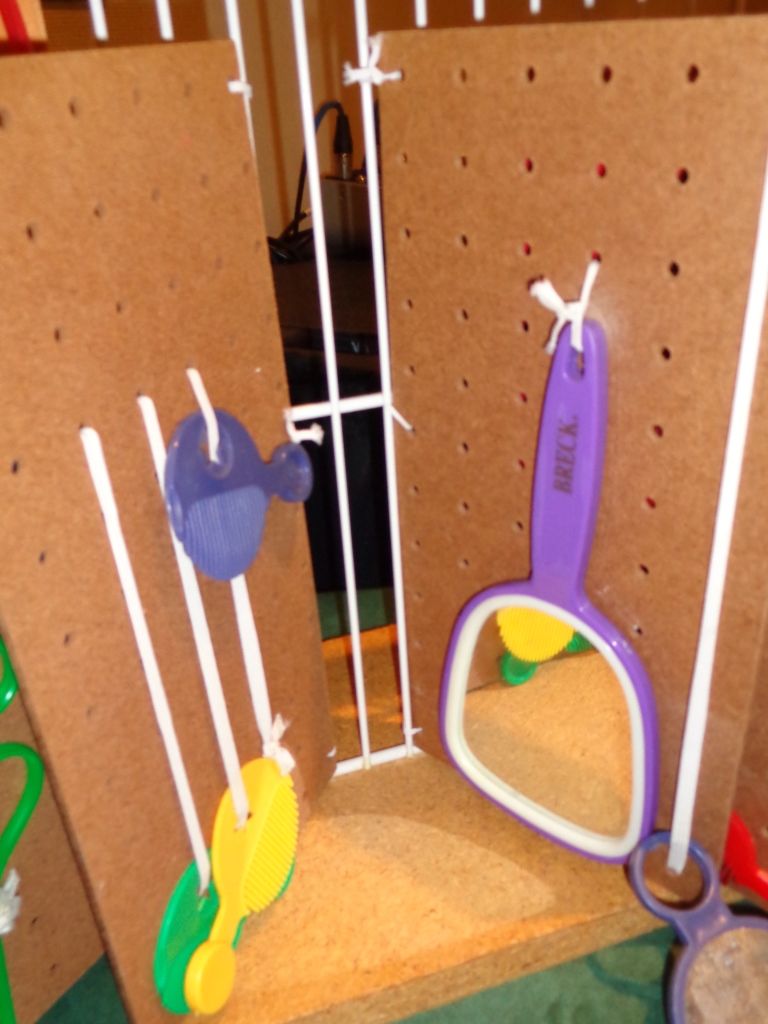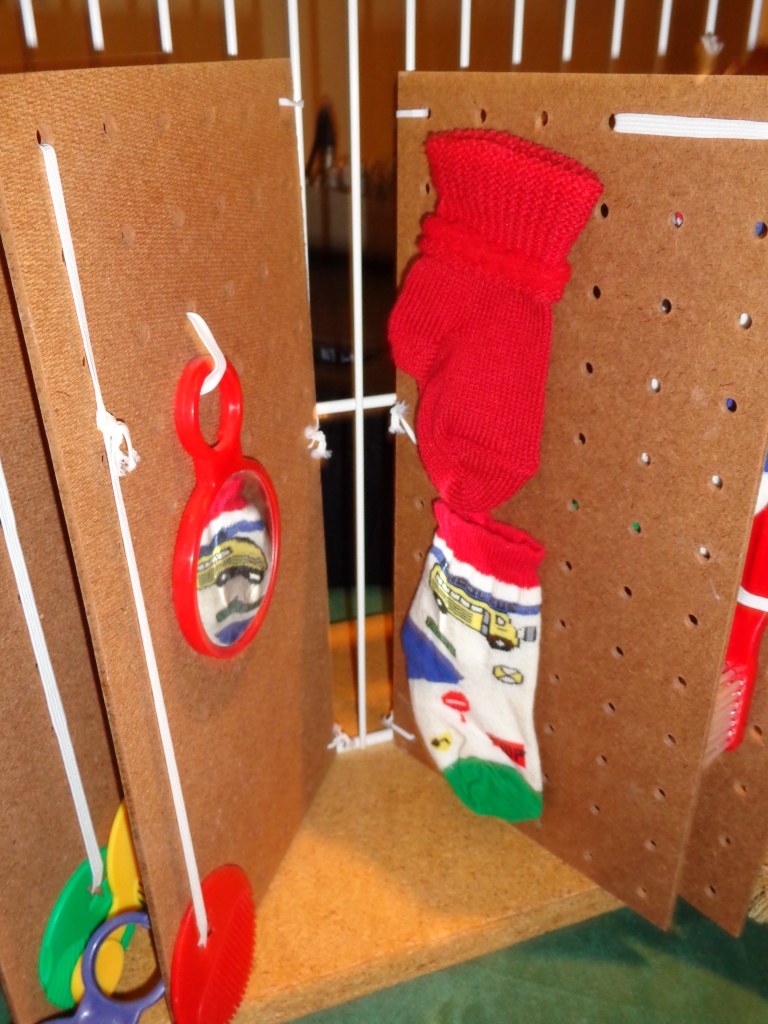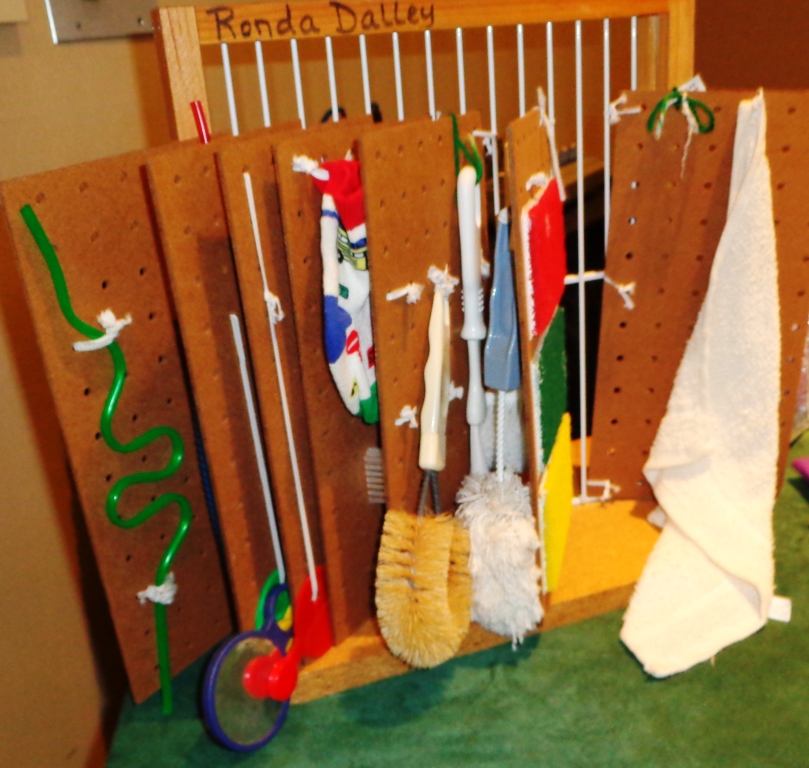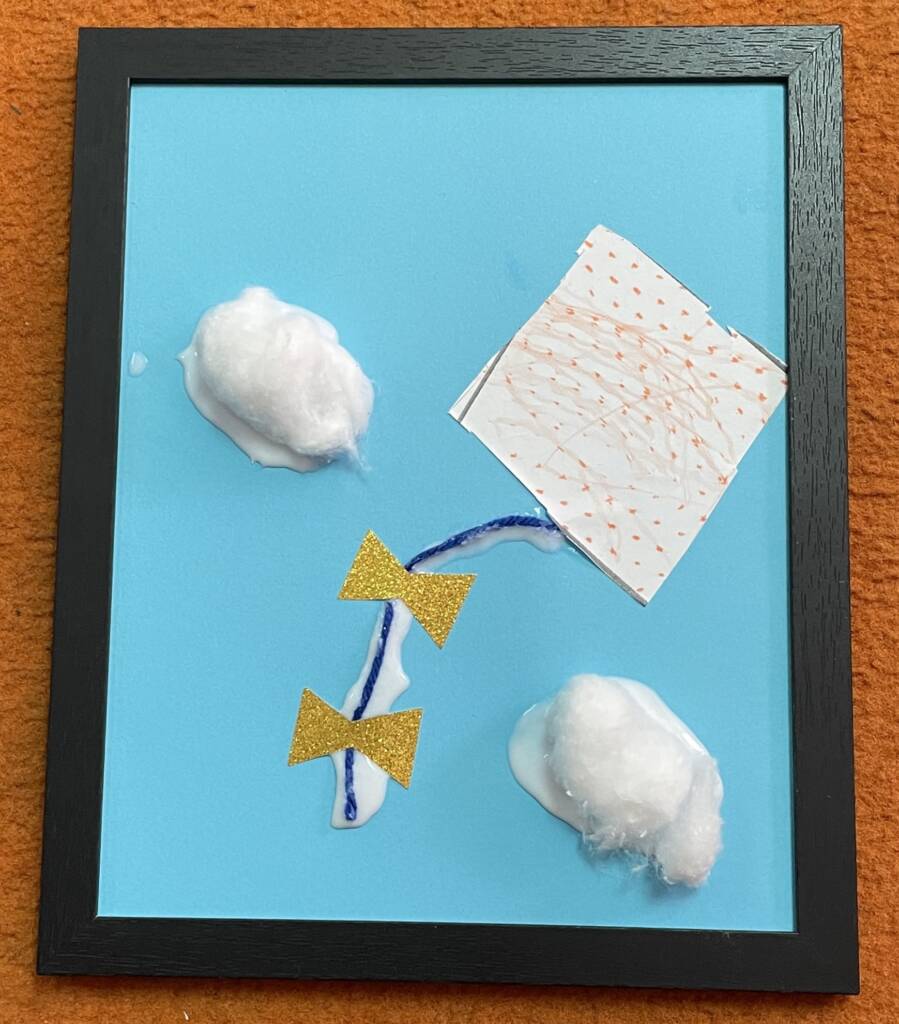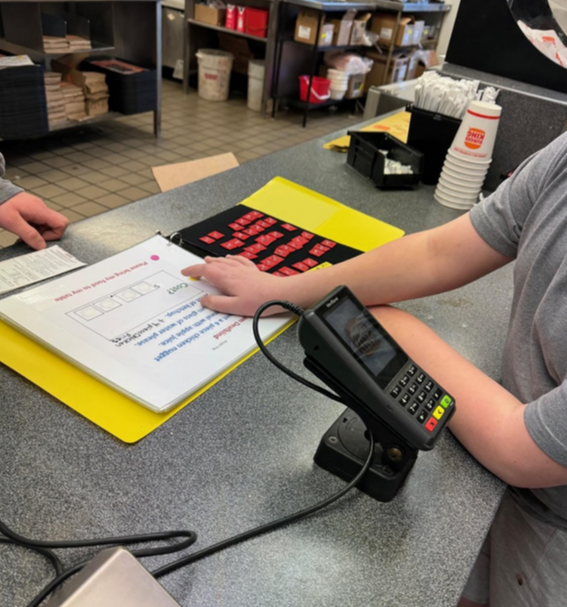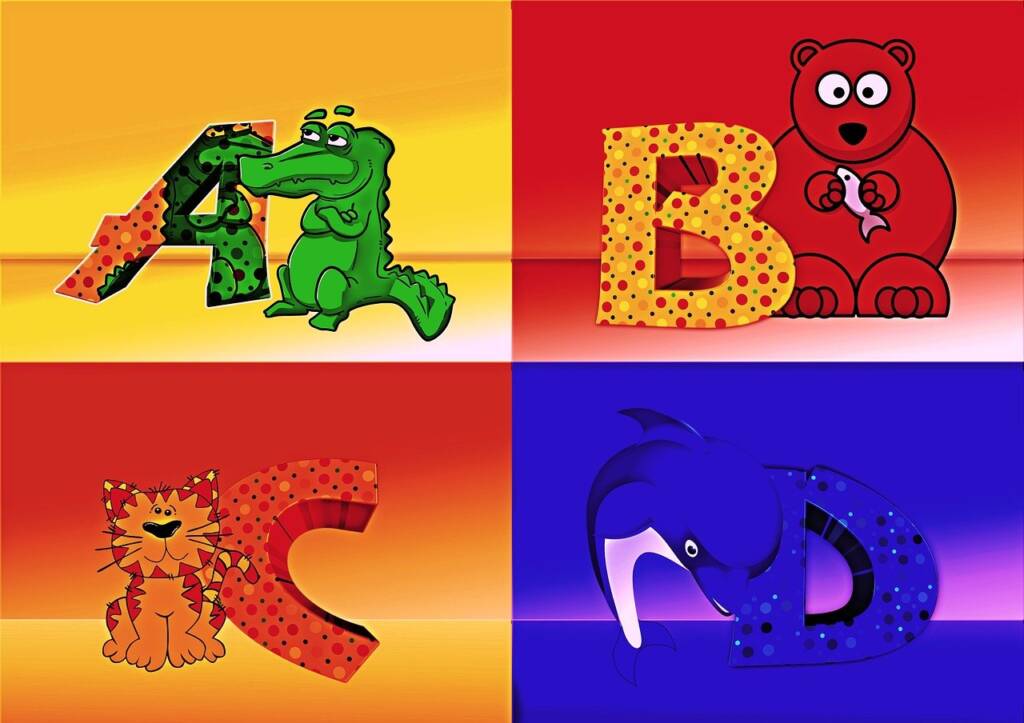Pegboard books provide a way for young children who are blind or visually impaired, including those with multiple disabilities, to begin to explore books. Based on the work of Dr. Lilli Nielsen and her Active Learning approach, this format uses real objects attached to pieces of pegboard. The common household materials that are selected have varied and interesting tactile properties, which encourage exploration. Ronda Dalley of the New Mexico School for the Blind shared this example of a pegboard book.
- pegboard
- shelving unit or frame to hold the book together
- string, velcro, cable ties, or other way to secure the items to the book
- interesting tactile materials, such as mirrors, brushes, socks, and other textured items
Once the book has been constructed, encourage children to explore each page, while providing support, as necessary.
- Items can be changed, as needed, or removed to be cleaned.
- Books can be made following a theme or a routine, such as bathtime.
- For more examples of pegboard books, see also the Active Learning Space website.



